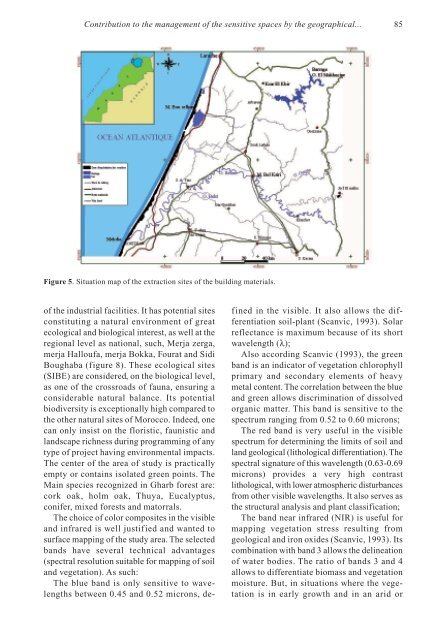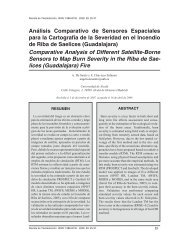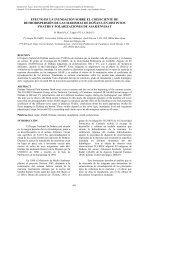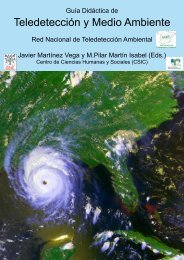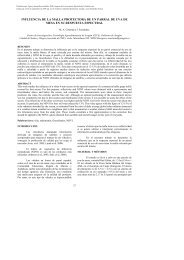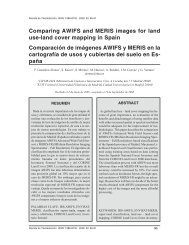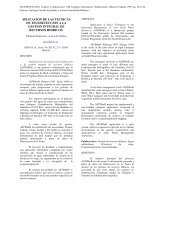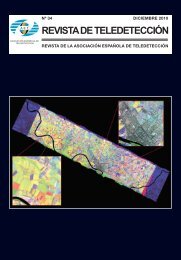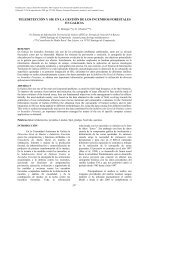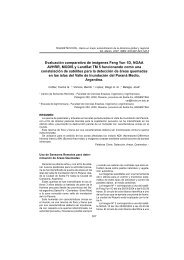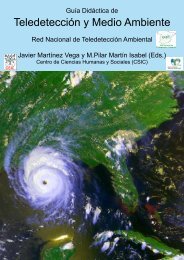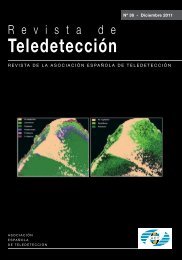00_cubiertas 38 v1 - Asociación Española de Teledetección
00_cubiertas 38 v1 - Asociación Española de Teledetección
00_cubiertas 38 v1 - Asociación Española de Teledetección
Create successful ePaper yourself
Turn your PDF publications into a flip-book with our unique Google optimized e-Paper software.
Contribution to the management of the sensitive spaces by the geographical... 85<br />
Figure 5. Situation map of the extraction sites of the building materials.<br />
of the industrial facilities. It has potential sites<br />
constituting a natural environment of great<br />
ecological and biological interest, as well at the<br />
regional level as national, such, Merja zerga,<br />
merja Halloufa, merja Bokka, Fourat and Sidi<br />
Boughaba (figure 8). These ecological sites<br />
(SIBE) are consi<strong>de</strong>red, on the biological level,<br />
as one of the crossroads of fauna, ensuring a<br />
consi<strong>de</strong>rable natural balance. Its potential<br />
biodiversity is exceptionally high compared to<br />
the other natural sites of Morocco. In<strong>de</strong>ed, one<br />
can only insist on the floristic, faunistic and<br />
landscape richness during programming of any<br />
type of project having environmental impacts.<br />
The center of the area of study is practically<br />
empty or contains isolated green points. The<br />
Main species recognized in Gharb forest are:<br />
cork oak, holm oak, Thuya, Eucalyptus,<br />
conifer, mixed forests and matorrals.<br />
The choice of color composites in the visible<br />
and infrared is well justified and wanted to<br />
surface mapping of the study area. The selected<br />
bands have several technical advantages<br />
(spectral resolution suitable for mapping of soil<br />
and vegetation). As such:<br />
The blue band is only sensitive to wavelengths<br />
between 0.45 and 0.52 microns, <strong>de</strong>fined<br />
in the visible. It also allows the differentiation<br />
soil-plant (Scanvic, 1993). Solar<br />
reflectance is maximum because of its short<br />
wavelength (λ);<br />
Also according Scanvic (1993), the green<br />
band is an indicator of vegetation chlorophyll<br />
primary and secondary elements of heavy<br />
metal content. The correlation between the blue<br />
and green allows discrimination of dissolved<br />
organic matter. This band is sensitive to the<br />
spectrum ranging from 0.52 to 0.60 microns;<br />
The red band is very useful in the visible<br />
spectrum for <strong>de</strong>termining the limits of soil and<br />
land geological (lithological differentiation). The<br />
spectral signature of this wavelength (0.63-0.69<br />
microns) provi<strong>de</strong>s a very high contrast<br />
lithological, with lower atmospheric disturbances<br />
from other visible wavelengths. It also serves as<br />
the structural analysis and plant classification;<br />
The band near infrared (NIR) is useful for<br />
mapping vegetation stress resulting from<br />
geological and iron oxi<strong>de</strong>s (Scanvic, 1993). Its<br />
combination with band 3 allows the <strong>de</strong>lineation<br />
of water bodies. The ratio of bands 3 and 4<br />
allows to differentiate biomass and vegetation<br />
moisture. But, in situations where the vegetation<br />
is in early growth and in an arid or


